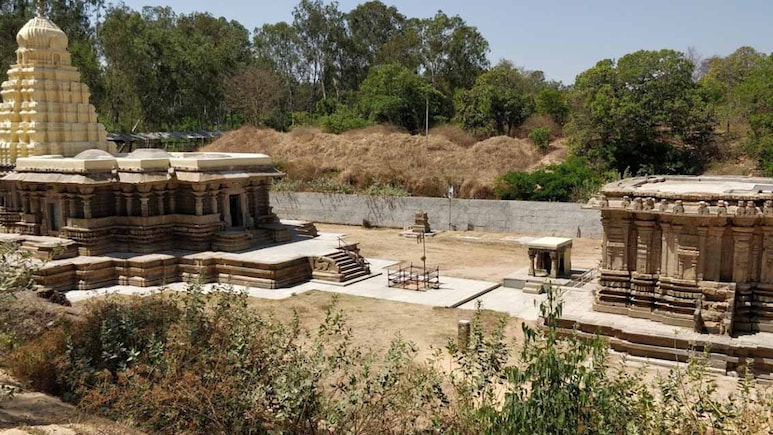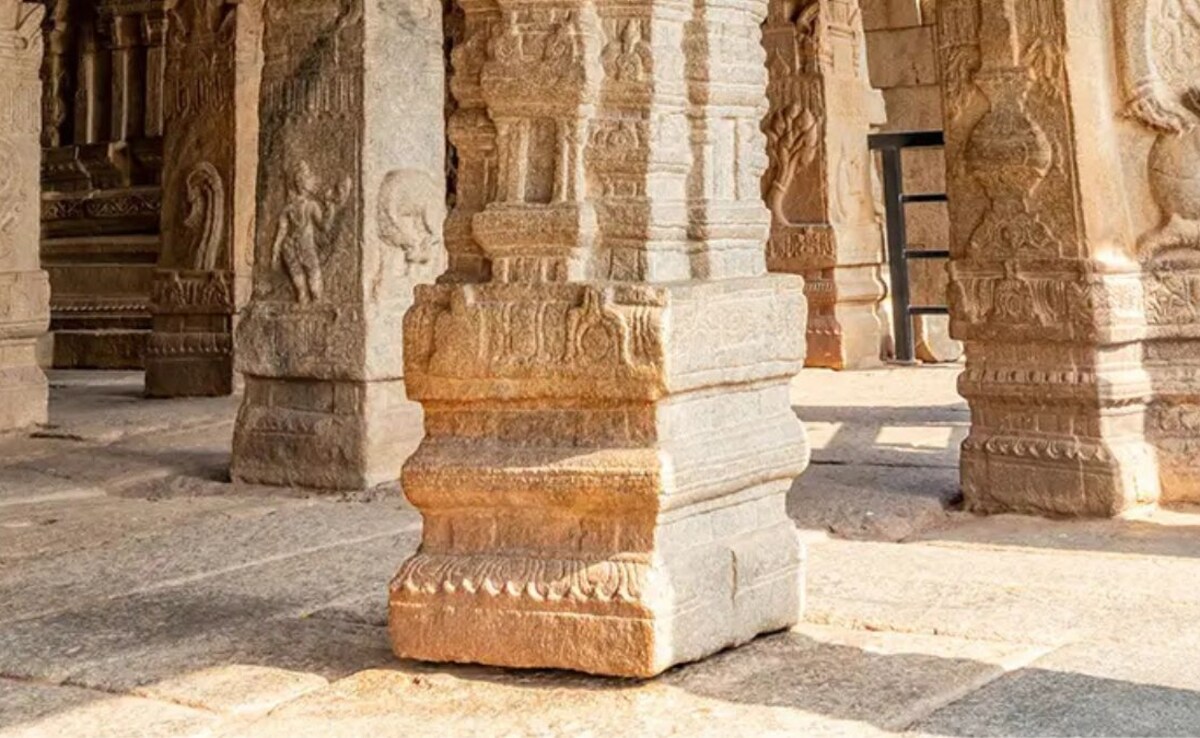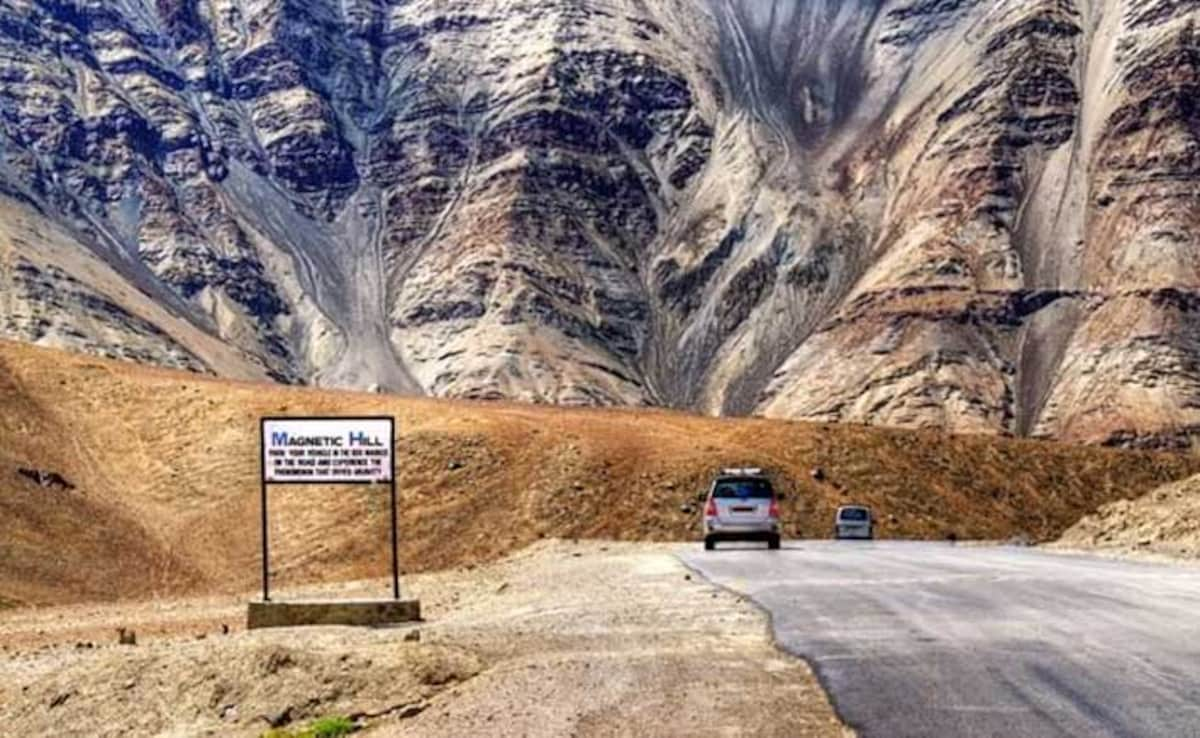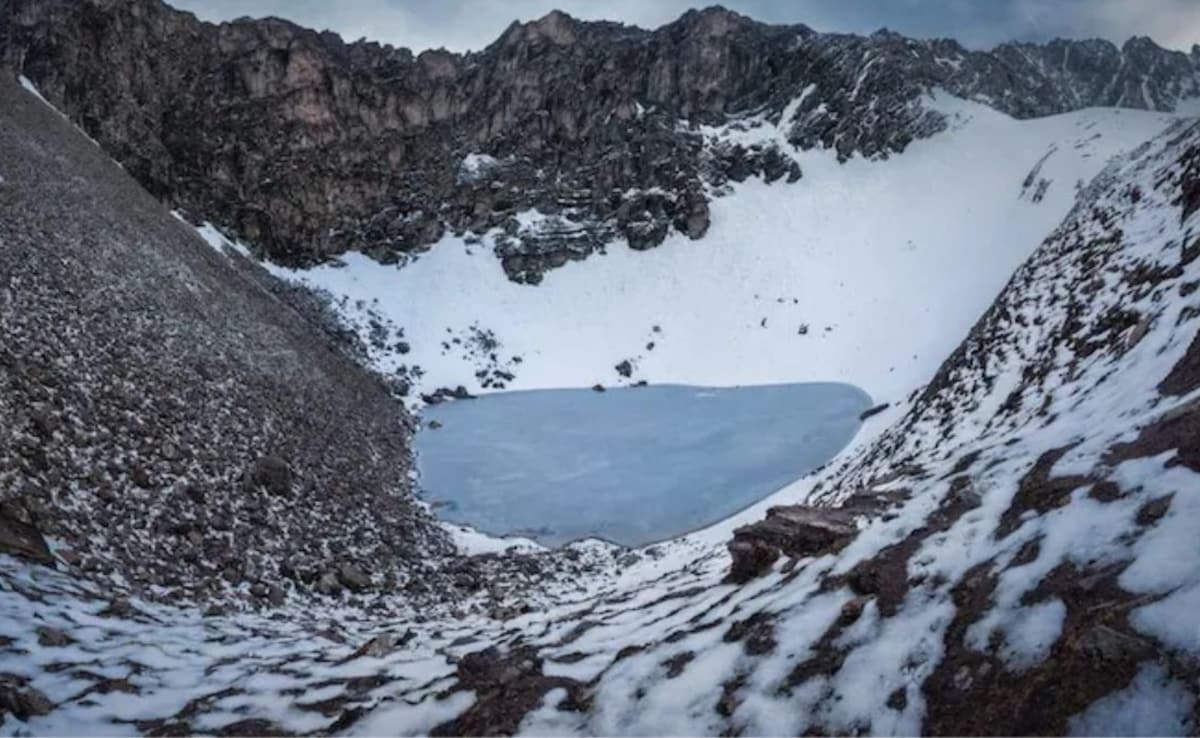
- Lepakshi Temple in Andhra Pradesh has a pillar that does not touch the ground but remains suspended
- Talakads temples in Karnataka are half-buried in sand, linked to a widow’s curse and shifting river patterns
- Ladakh’s Magnetic Hill creates an optical illusion of vehicles rolling uphill despite gravity
India has long occupied a grey space between myth and science. From temples with floating pillars to villages without doors, the country is filled with places that refuse to play by the rules of logic. These are not typical tourist stops; they are sites where folklore, faith and unexplained phenomena come together to form something far more intriguing. For some, these places are proof of divine power. For others, they are unsolved puzzles from the pages of history. Either way, each of them invites the same question: what if the world still holds mysteries beyond what meets the eye?
7 Indian Places So Strange They Will Leave You Wondering What's Real:
1. Lepakshi Temple's Hanging Pillar, Andhra Pradesh
In the quiet town of Lepakshi stands a 16th-century temple dedicated to Lord Shiva. While the temple's intricate carvings and Dravidian architecture attract art lovers, it is a single pillar that continues to draw scientists and sceptics alike.
Out of the 70 stone pillars supporting the structure, one does not touch the ground. Locals believe that sliding a piece of cloth beneath it brings good luck. Engineers and archaeologists have examined it, yet none have fully explained how it remains suspended. Some see it as a stunning example of ancient engineering, while others insist it is divine power at work. Either way, the pillar continues to make visitors pause and look twice.
Also Read: 8 Mysterious Attractions Around The World And The Bizarre Stories Behind Them

Photo Credit: lepakshitemple.in
2. Talakad's Vanishing Temples, Karnataka
Once a vibrant riverside settlement dotted with over 30 temples, Talakad on the banks of the Kaveri River is now covered in golden sand. Legend says a widow's curse turned the fertile town into a desert centuries ago. Even today, dunes rise mysteriously around half-buried temple spires, giving the landscape an eerie stillness.
Geologists have offered theories about shifting river patterns and erosion, but the transformation of this once-flourishing town remains difficult to explain. Locals continue to hold faith in the legend, and pilgrims still visit the submerged shrines that occasionally re-emerge from the sands.
3. The Gravity-Defying Magnetic Hill, Ladakh
On the Leh-Kargil highway, about 30 kilometres from Leh, lies a stretch of road that plays tricks on your eyes - the Magnetic Hill. Here, vehicles left in neutral appear to roll uphill, defying gravity itself.
Many believe a strong magnetic field is responsible. Scientists, however, claim it is an optical illusion caused by the layout of the surrounding hills. The road that looks uphill is actually sloping downward. The horizon simply deceives the mind.
Yet for travellers, the experience feels nothing short of magical. Local folklore even suggests the hill once pulled only the pure-hearted toward heaven. Whether you are drawn by science or superstition, this patch of road remains one of Ladakh's most fascinating stops.
Also Read: 7 Strange Passport Rules That Could Ruin Your Next Holiday

Photo Credit: lehladakhtourism.com
4. Shani Shingnapur: The Village Without Doors, Maharashtra
In the village of Shani Shingnapur, something immediately stands out - there are no doors. Homes, schools, and even shops remain open to the world. The residents believe that Lord Shani, the deity of justice, protects them from harm.
Their belief runs so deep that crimes are almost unheard of here. Sociologists and police officials have studied the phenomenon, but locals credit it entirely to faith. To them, Shani's protection is real, and the open doors are a symbol of trust that has stood the test of time.
5. Roopkund: The Skeleton Lake, Uttarakhand
High in the Himalayas lies Roopkund, a frozen glacial lake that hides an unsettling secret - hundreds of human skeletons beneath its surface. When the snow melts each summer, the bones become visible, offering a chilling reminder of a forgotten tragedy.
Discovered in the 1940s, the remains were initially believed to belong to soldiers or traders. But scientific research revealed they date back to the 9th century. DNA analysis later suggested they were pilgrims struck by a sudden hailstorm. Even so, the sheer number of skeletons and their state of preservation continue to puzzle experts. Roopkund remains one of India's most haunting archaeological mysteries.
6. Boha Geoglyphs: India's Ancient Desert Designs, Rajasthan
Deep within the Thar Desert near Boha village lies a set of gigantic earth drawings that have baffled archaeologists worldwide. Known as the Boha Geoglyphs, these formations are etched into the ground, resembling spirals and serpentine shapes - much like the famous Nazca Lines of Peru.
Discovered in 2014 by French researchers studying satellite images, the largest of these designs stretches over 12 kilometres. Together, they cover an area of more than 100,000 square metres. The mystery lies in how ancient creators could have designed such perfect patterns without any aerial perspective or modern tools.
Some experts believe the markings had ritualistic or astronomical purposes. Others think they served as ancient territorial symbols. Whatever their origin, the Boha Geoglyphs now hold the record as the largest known geoglyphs on the planet.
7. Bullet Baba Shrine, Rajasthan
Temples in India usually honour deities, but in Bandai village near Jodhpur, one shrine worships a motorbike. The story of Bullet Baba, or Om Banna, began when Om Singh Rathore died in a tragic accident on his Royal Enfield. After the incident, the police confiscated the bike - only for it to mysteriously return to the accident spot several times, even after being chained and drained of fuel.
Baffled by the incident, villagers built a small shrine around the bike. Travellers now stop to pay respects and seek blessings for safe journeys. What began as a local legend has become one of India's most talked-about roadside miracles.
Also Read: 7 Micronations That Are No Less Than Utopian Wonderlands
How To Visit These Places Responsibly?
While these destinations carry an air of mystery, visiting them responsibly ensures their stories live on.
- Research the best time to visit: Some sites, like Roopkund and Jatinga, are seasonal and require specific conditions.
- Respect local beliefs: Many of these spots are sacred. Dress modestly and follow community customs.
- Travel with a local guide: Especially for remote areas, guides can provide insight and ensure safety.
- Check accessibility: Locations like Roopkund involve high altitudes and treks, so preparation is key.
Why These Mysteries Still Fascinate India?
Despite modern science and satellite technology, many of these phenomena remain unsolved. Limited research access and the persistence of local legends keep their mystery alive. Perhaps the appeal lies in that very uncertainty - that not everything in the world can be neatly explained.
India's mysterious places remind us that travel is not only about ticking off destinations but about questioning what we think we know. These sites invite travellers to step into stories where logic pauses and imagination takes over.
Also Read: 7 Unique Spiritual Experiences In India You'll Never Forget

Photo Credit: X (Roopkund lake)
The Bottom Line:
India's most mysterious destinations do not need dramatic explanations. They survive in whispers, beliefs, and the thrill of the unknown. Whether you are a sceptic or a seeker, these places promise something rare - experiences that stay with you long after you leave. So next time you plan a journey, add a touch of mystery to the map. You may not find all the answers, but you will return with a few unforgettable questions.
Track Latest News Live on NDTV.com and get news updates from India and around the world

